Sixty-six million years ago, at the end of the Cretaceous, Madagascar had already been an island for about 20 million years. And just as today, the island would have boasted a unique assortment of organisms isolated from most of the outside world. Thanks to fossils preserved in the Maevarano Formation we know the region was home to Beelzebufo, the world’s largest known frog, the theropod Masiakasaurus with it’s strange, forward projecting teeth, the herbivorous crocodylomorph, Siamosuchus, and the 8-meter sauropod, Rapetosaurus. And along its semi-arid coastal floodplains would have roamed Majungasaurus crenatissimus. At a modest 6 meters in length, Majungasaurus was a far cry from the Tyrannosaurus that dominated western North America at the same time, but on its tiny island kingdom, Majungasaurus reigned as Madagascar’s apex predator.
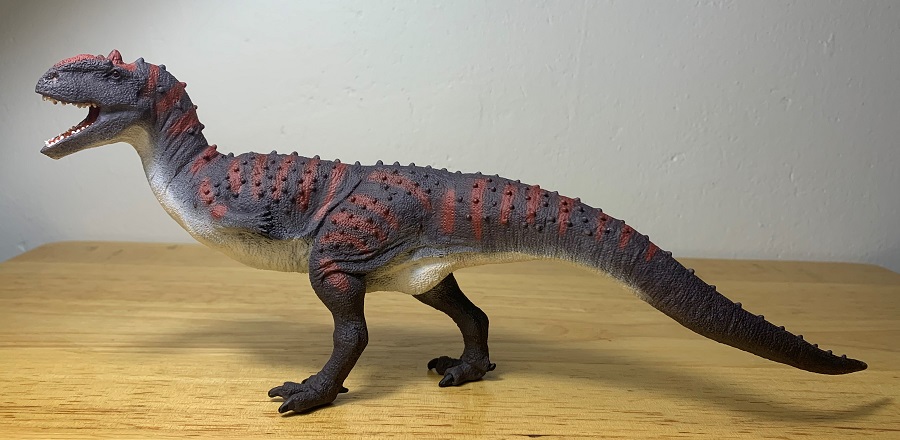
Majungasaurus was an abelisaurid, a family of theropods known for their short, gnarly ornamented skulls, and ridiculously small forelimbs. The most popular abelisaurid would have to be Carnotaurus but Majungasaurus has its following as well, which has led to a consistent and vocal call for more decent figures representing it. Now, for 2023, Safari Ltd. has answered that call.
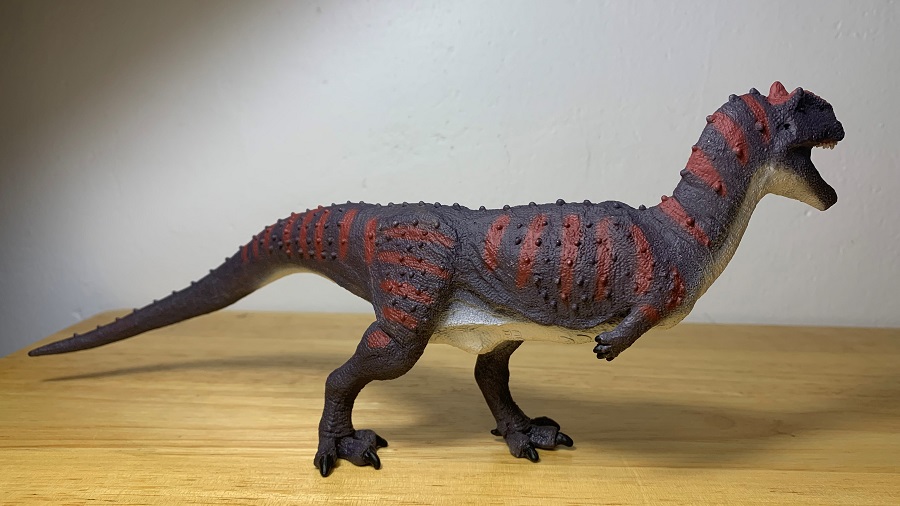
The Safari Majungasaurus measures about 11” (28 cm) long and stands 4” (10 cm) tall to the top of the head. This puts the figure at about 1/20 in scale and about the same size as the Safari Carnotaurus figure from 2019. The figure is dramatically posed with its tail slung low with a rightward bend, and the head lifted high and looking leftward, mouth agape.

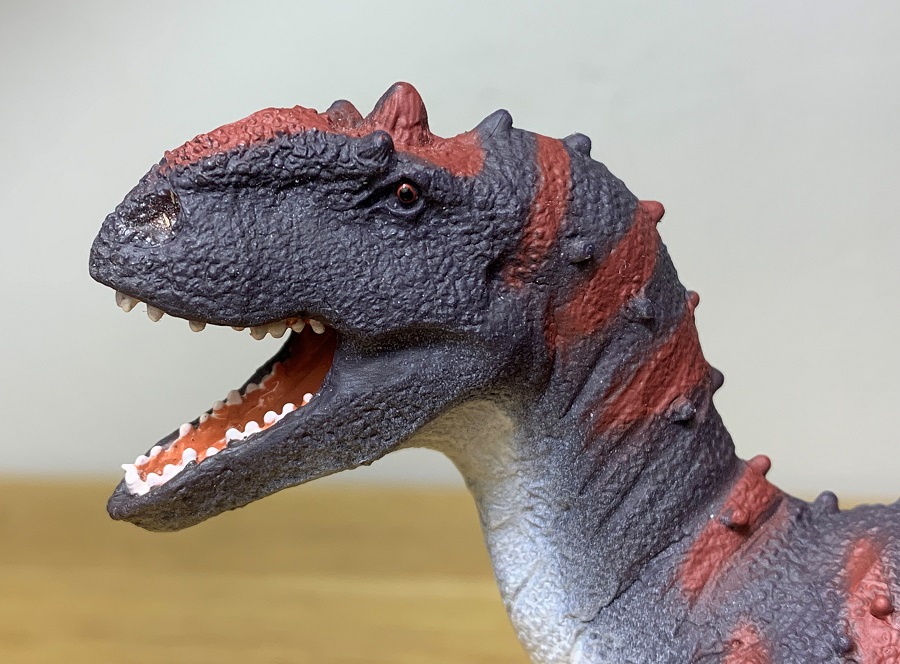
Majungasaurus has affectionately been referred to as a “sausage with legs” because it had an incredibly long neck and torso. And unlike Carnotaurus, it had comparatively short legs. These strange proportions add some challenges in creating a stable, bipedal figure of the genus but Safari managed to pull it off nicely. Thanks to its dynamic posture the Safari Majungasaurus stands securely on its own two feet. But in case you don’t trust its stability, you can always use the plastic stand that comes with the figure.
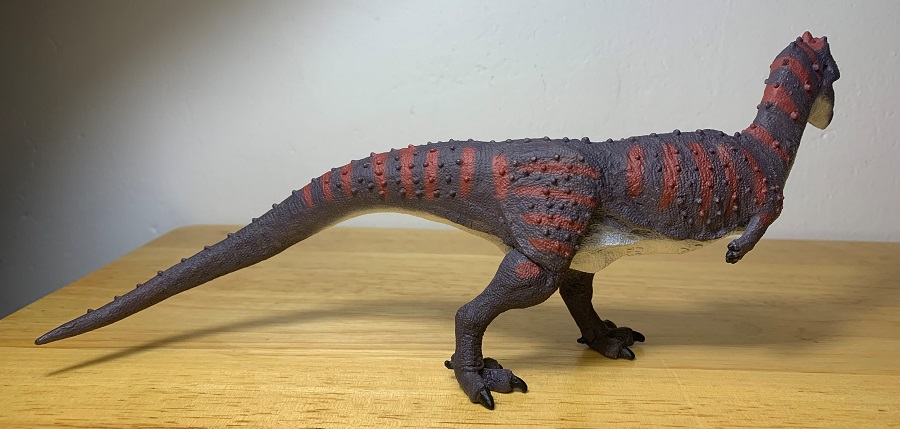
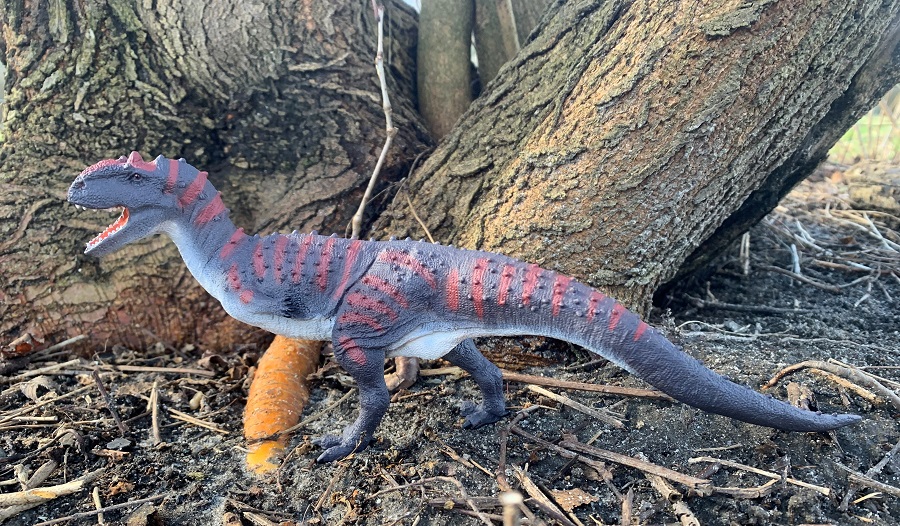
Unlike Carnotaurus, which is only known from a single specimen, we have the remains of over 20 individual Majungasaurus, so we have a pretty good idea what it looked like and Safari nails it here. The skull is short and deep, though not as short as it would be on Carnotaurus. It is also wider than the skull of Carnotaurus or other abelisaurids. The dorsal surface of the snout has a thick ridge that is rough in texture, along with a short, single horn atop the head.

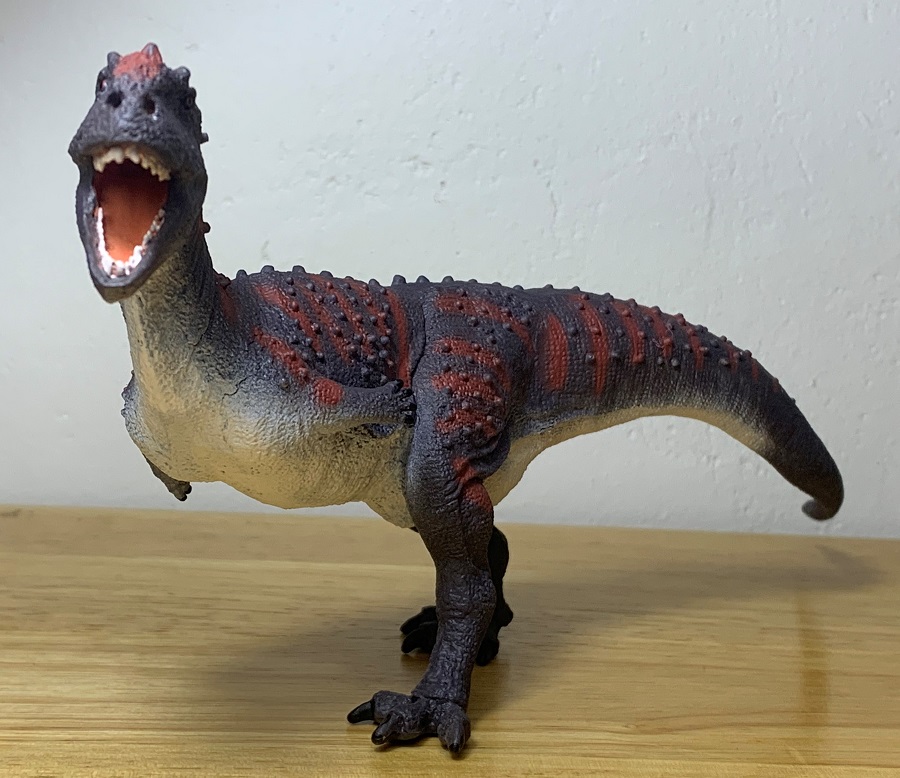
The torso appears comically long, especially with the short forelimbs that from a distance, almost appear absent. The forelimbs are sculpted with four clawed digits, but it is possible that Majungasaurus didn’t have claws at all. The legs are appropriately stocky and short.
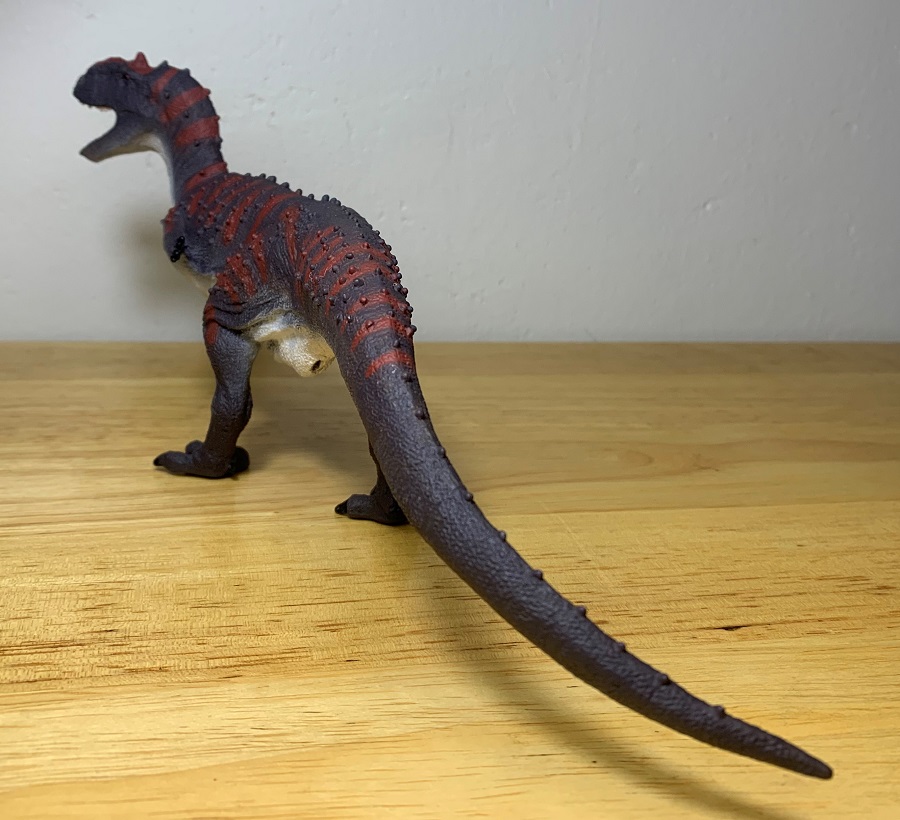

The figure is covered in fine pebbly scales with larger scutes, or feature-scales, haphazardly distributed across the body and a midline of scales down the back. You’ll notice that this differs from the 2019 Safari Carnotaurus that shows scutes running down the body in rows, which was the common depiction of the time. This figure follows a 2021 study on Carnotaurus skin patterns which show that the scutes would have been randomly distributed. Other fine details to be appreciated here include the various wrinkles and skin folds, especially around the neck and hindlimbs, a sculpted cloaca, and thickened skin and folds on the feet. The latter is a feature of many recent Safari theropods that I personally appreciate.

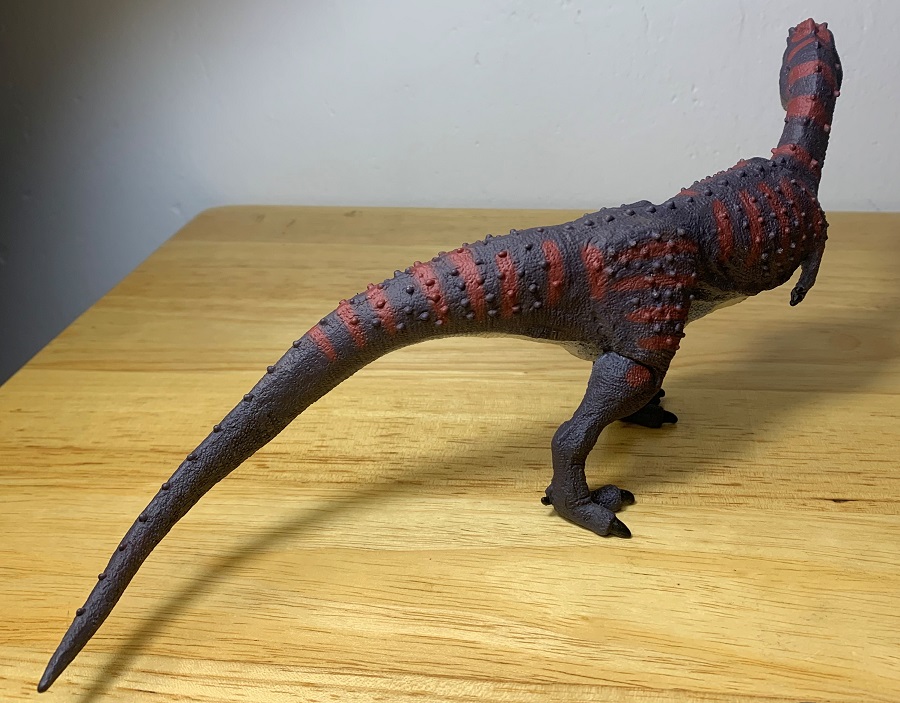
For those thinking that the paintjob on this figure has a familiar feel to it, you’re not alone. Upon first seeing the figure I too was reminded of the Demon Carnotaurus from the Kenner Jurassic Park toy line. I don’t know if this is a coincidence or not but it’s a similarity I personally do not mind. Although, unlike that figure the body color here is dark purple, which I really appreciate as something unique and different from the usual grays, browns, and greens.
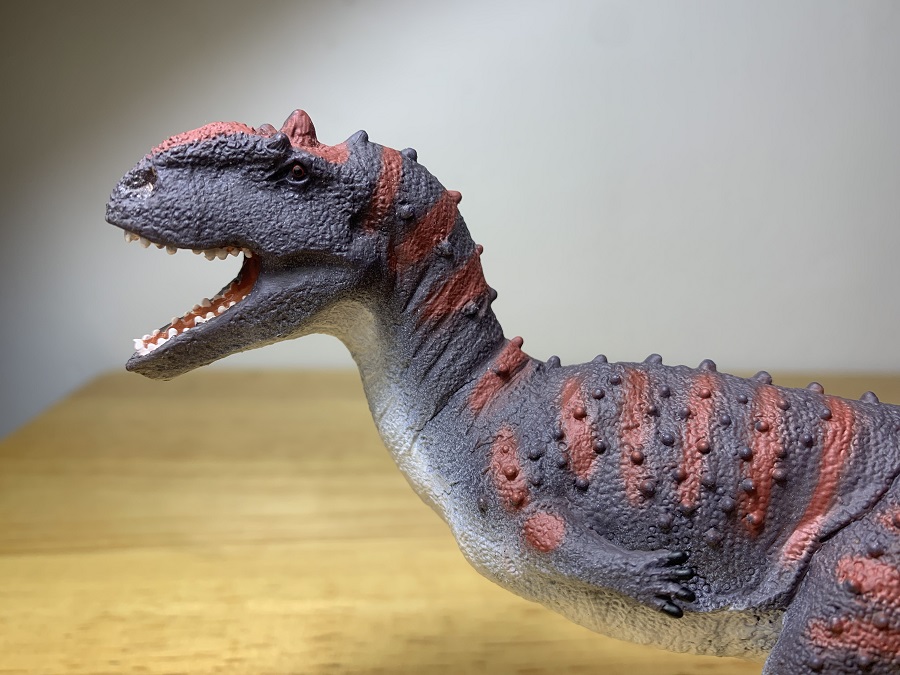

Maroon colored bands are painted across the hide and the belly is painted vivid white, which beautifully contrasts with the darker coloration elsewhere. The nails are all painted black, and the teeth are meticulously painted white. The eyes are vibrant red with round, black pupils and the inside of the mouth is pink. The eyes, nostrils, and inside of the mouth are painted with a glossy finish that effectively makes them appear wet and lifelike.

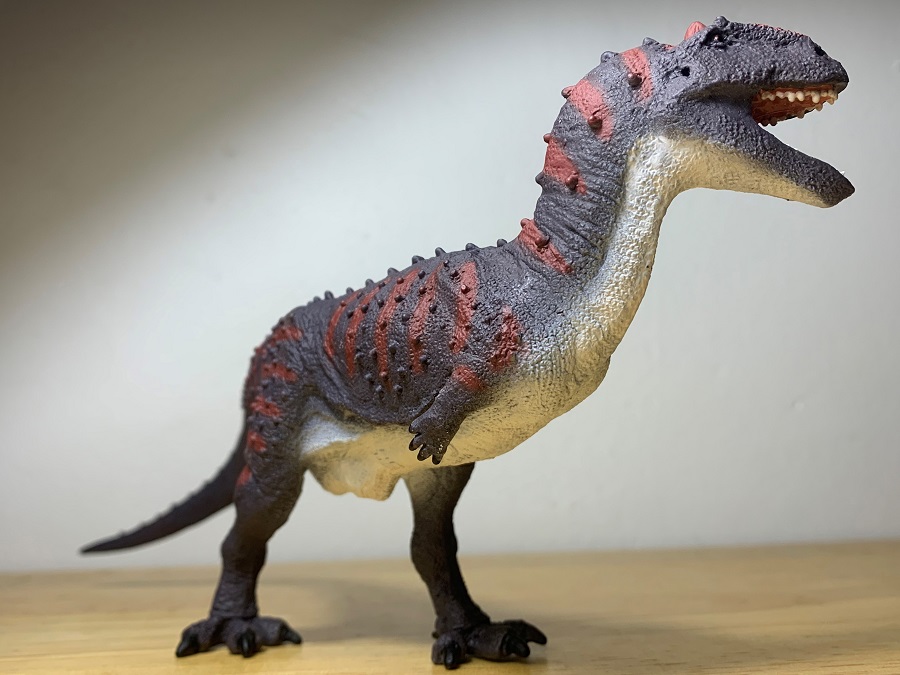
The Safari Majungasaurus is the first figure to be announced by Safari this year and with it they’re coming out the gate strong. This is a beautifully crafted and accurate figure that is further enhanced by its dynamic pose and unique color palette. The wait for a decent Majungasaurus for our shelves and toyboxes is finally over. Lastly, I would like to extend my gratitude towards Safari Ltd. for kindly sending along this figure as a review sample.
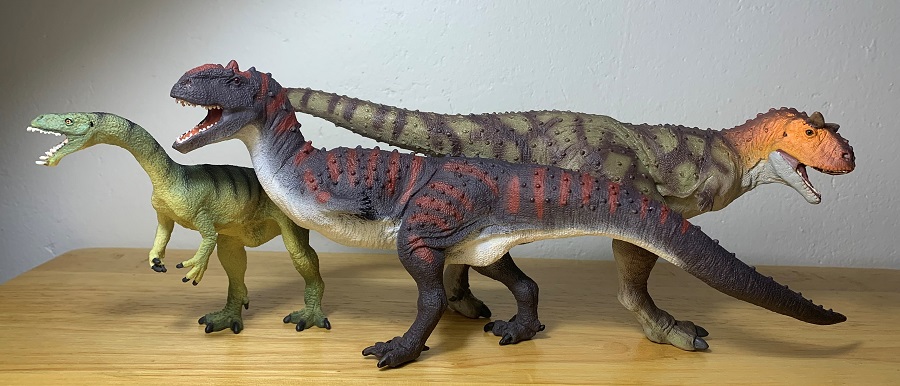
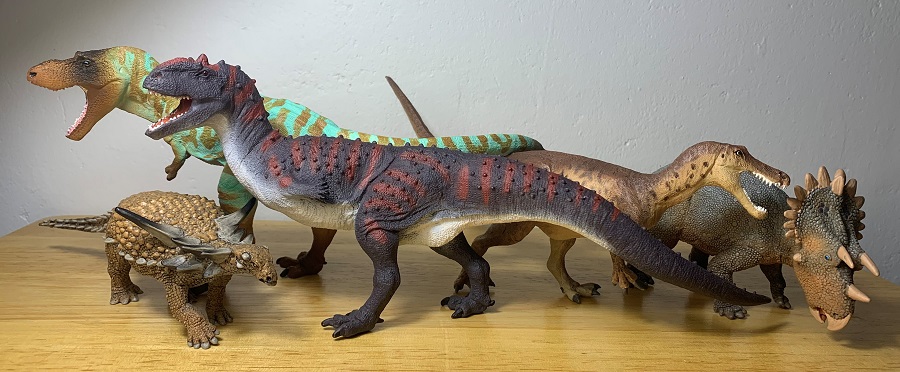

Support the Dinosaur Toy Blog by making dino-purchases through these links to Ebay and Amazon. Disclaimer: links to Ebay.com and Amazon.com on the The Dinosaur Toy Blog are often affiliate links, when you make purchases through these links we may make a commission

This new Majungasaurus looks incredible, the colors are very refreshing and awesome. I hope to have this figure soon!
Great review, glad you were able to get an early look! This is definitely the nicest Majungasaurus toy to date.
Another option if you’re worried about stability: a hot dog bun.
Thanks! That hot dog bun idea would make for a fun photo shoot. But do I just put the bun on its back or poke holes in the bun for its legs to poke through?
Ha, good question. I guess I was thinking squish it between its legs to make it fit, but I like the idea of the dinosaur wearing the hot dog bun as pants. Poke holes it is!
I…um…relish the idea
Well, I’m definitely down for it. Been wanting a good Majungasaurus for a long time now.
A nice surprise of a review! About this code. Presumably it’s for orders from safariltd.com directly?
Yes it is. I just edited the review to specifically indicate that. Thanks!
Lovely review of an equally lovely model, thank you! Safari starting out 2023 strong and I love to see it.
Thanks!
what’s not to like about this figure? Instant pick up.
thanks for another great review.
No problem, and thank you!
Ok same time this came out, SpinoDude reviews posted his review of Majungasaurus
What an awesome surprise review! My thanks to Safari as well for providing this special preview. This is looking like a strong start to the year for sure!
Thanks for comparing this with the Mattel one, and of course the Safari Ltd Carnotaurus too, figures I both own. Actually I have all the others too except the Masiakasaurus I’m behind on, and the new Albertosaurus.
Lucky you getting this early to review this already.
No problem! They seemed like obvious comparison choices to me.
An instant acquisition when it becomes available! Wonderful review as always, Gwangi!
Thank you!